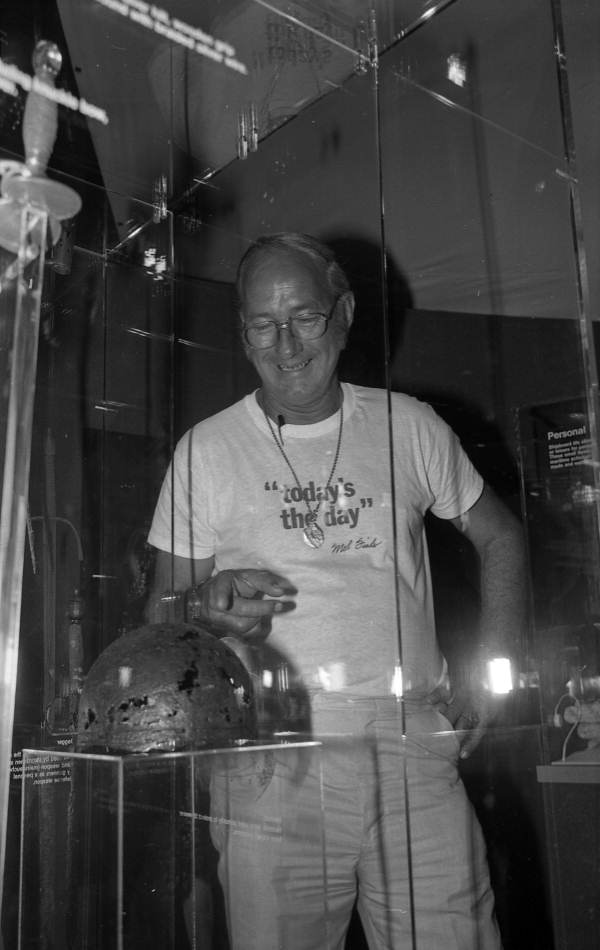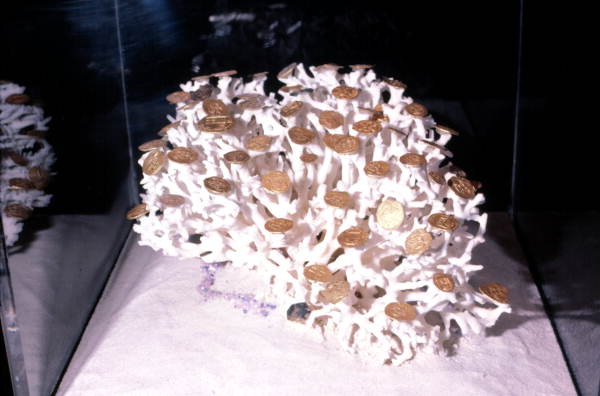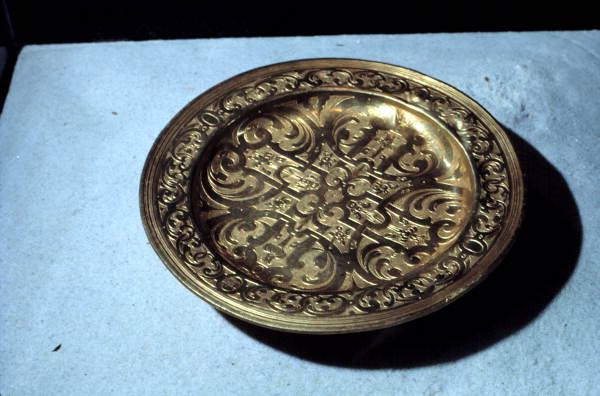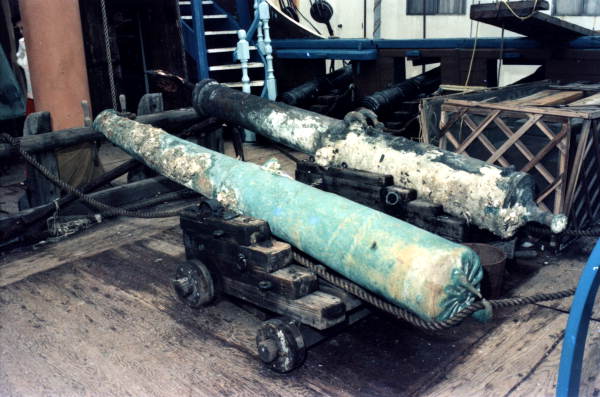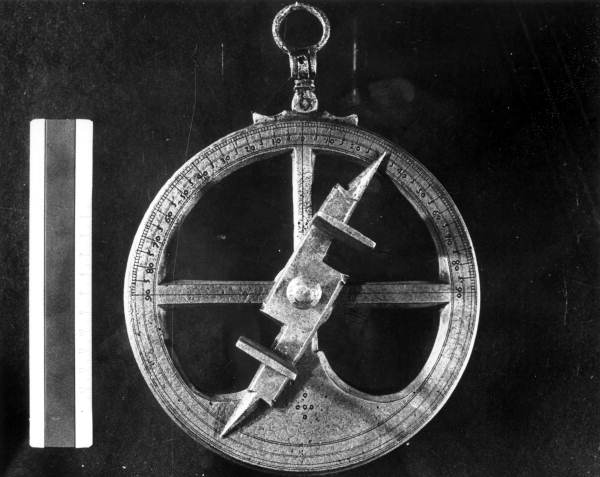Description of previous item
Description of next item
Shipwreck of the Atocha
Published September 9, 2014 by Florida Memory
It was June 13, 1971. Don Kincaid, who had been diving off the coast of the Florida Keys, made his way to the surface with a handful of something shiny, coiled up like a small snake. He climbed aboard the work boat Virgalona with the aid of a ladder, and excitedly spread his find out for his colleagues to see.
Kincaid’s boss, shipwreck hunter Mel Fisher, congratulated him and radioed to his other cruiser nearby to join them. Kincaid had found nearly eight feet of gold chain, a sign that Fisher and his team were close to something big. In time, they would learn that they had found the remains of a Spanish treasure ship, part of a fleet lost in a hurricane in 1622. The ship was called Nuestra Señora de Atocha.
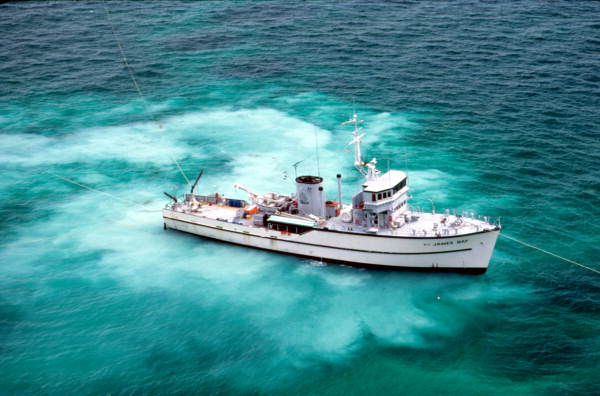
The work ship James Bay, used by Mel Fisher and his crew to excavate the remains of the Spanish galleon Atocha (1979).
The Spanish government sent treasure fleets periodically to its New World possessions to collect gold, silver, precious stones, and trade goods that had been mined or produced there. The ships then returned to Spain to deliver their holdings into the coffers of the Spanish monarchy. The Atocha had been recently built at Havana, Cuba for one of these missions. The name Nuestra Señora de Atocha honored the Virgin of a shrine near Madrid. The ship was 600 tons.
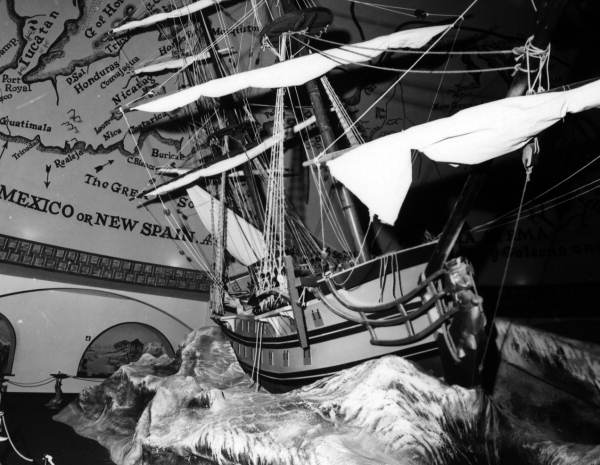
An example of a Spanish galleon similar to the Atocha, on display at McKee’s Museum of Sunken Treasure on Plantation Key (1972).
When the 1622 treasure fleet left Spain in April, it carried wine, cloth, ironwork, and books to distribute to Spanish settlements in the Americas. It also carried around half a million pounds of mercury, which would be used to extract silver from ore mined in what is now Bolivia. When the fleet reached the New World, the ships began trading their goods for the riches of the Americas. They took on silver from Peru, gold bars and silver coins from New Granada, tobacco, indigo, and tons of Cuban copper.
Fleet officials were already getting nervous; hurricane season had started. The oppressive tropical summer heat was intense, and workers cursed and sweated in the baking sun as they loaded cargo and tended their ships. The Atocha and its sister vessels remained docked at Havana while their captains awaited the new moon, which they believed would provide fairer sailing weather until they could get past the dangerous Florida coast. On September 4th, the fleet finally put out to sea.
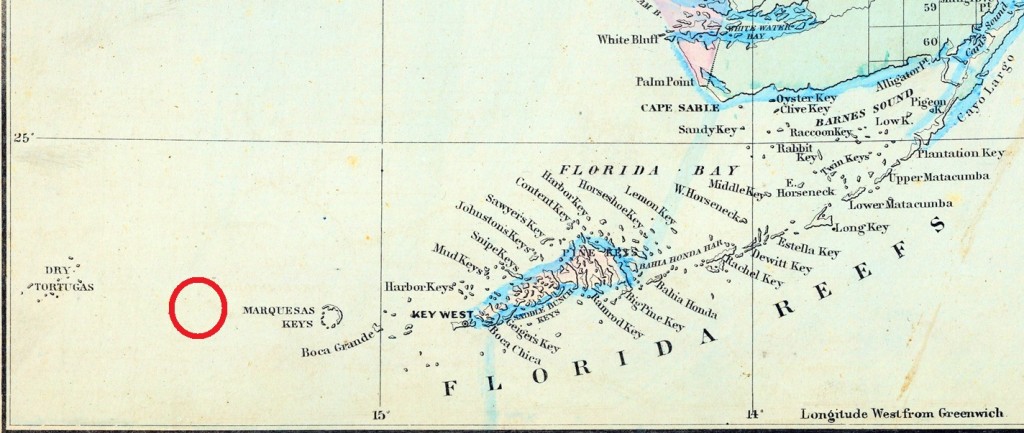
Map showing the approximate location of the wreck of the Spanish galleon Atocha (indicated by a red circle).
Less than two days later, a powerful hurricane passed over the fleet near the Dry Tortugas, snapping masts and scattering the ships. Two of the ships, Nuestra Señora de Atocha and the Santa Margarita, sunk within sight of one another after running aground between Key West and the Dry Tortugas. Only five people from the Atocha survived, one sailor, two ship’s boys, and two slaves.
The loss of the treasure of the Atocha and the Santa Margarita was a significant financial blow for Spain. The Spanish government needed this money to run the country, especially the military, which was involved at this time in the ongoing Thirty Years’ War plaguing Central Europe. The Spanish sent salvage ships to the supposed site of the wreck, where indigenous slaves dove to the sea floor with the aid of a diving bell to search for the lost cargo. Eventually, the Spanish recovered about half of the treasure lost from the Santa Maragrita. One Spanish recovery mission found the location of the Atocha, but the water was too deep for divers to reach it. The Spaniards had little choice to abandon the wreck and its treasure in the churning waters of the Florida Straits, where it would remain for over 300 years.
That is, until Don Kincaid swam to the surface to show his shining discovery to shipwreck hunter Mel Fisher. After nearly two years of additional searching, Fisher’s crew began unearthing large amounts of treasure from the sea floor. On one day in May 1973, the divers brought up around 1,500 coins. They nicknamed the area the “Bank of Spain.”
The treasures kept coming. Swords, cannonballs, gold bars, a rosary, the navigator’s astrolabe – treasure after priceless treasure emerged from the deep. Some were sold to pay for the costs of the hunt, including payments to people who had invested in Mel Fisher’s expedition. Many artifacts from the Atocha are now on display in museums around the Florida Keys.
What secrets lie beneath the waters near your Florida community? Search the Florida Photographic Collection for more photos of shipwrecks and the treasures they have yielded over the years.
Cite This Article
Chicago Manual of Style
(17th Edition)Florida Memory. "Shipwreck of the Atocha." Floridiana, 2014. https://www.floridamemory.com/items/show/295222.
MLA
(9th Edition)Florida Memory. "Shipwreck of the Atocha." Floridiana, 2014, https://www.floridamemory.com/items/show/295222. Accessed December 30, 2025.
APA
(7th Edition)Florida Memory. (2014, September 9). Shipwreck of the Atocha. Floridiana. Retrieved from https://www.floridamemory.com/items/show/295222

 Listen: The Assorted Selections Program
Listen: The Assorted Selections Program